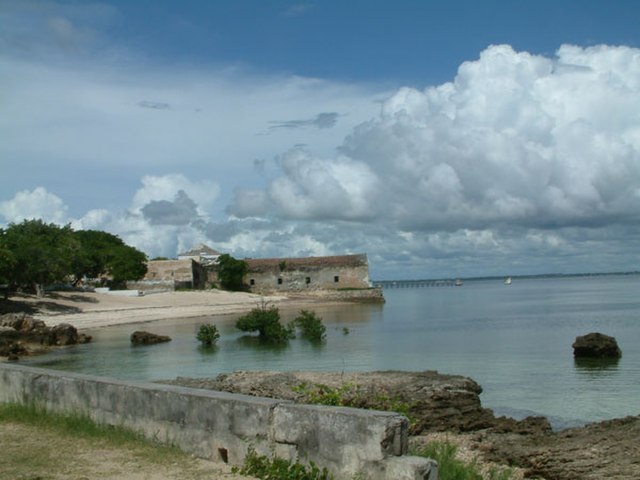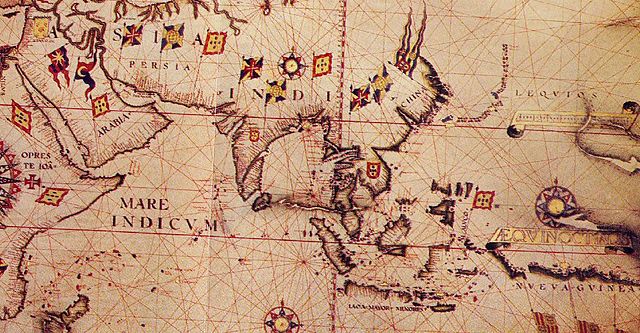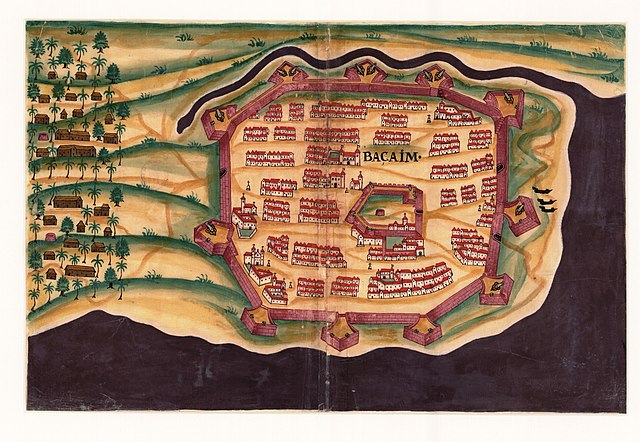The Portuguese Indian Armadas were the fleets of ships funded by the Crown of Portugal, and dispatched on an annual basis from Portugal to India. The principal destination was Goa, and previously Cochin. These armadas undertook the Carreira da Índia from Portugal, following the maritime discovery of the Cape route, to the Indian subcontinent by Vasco da Gama in 1497–99.
The large carrack, thought to be the Santa Catarina do Monte Sinai, and other Portuguese carracks of various sizes. From painting, attributed to either Gregório Lopes or Cornelis Antoniszoon, showing voyage of the marriage party of Portuguese Infanta Beatriz to Savoy, 1521.
A brief view of the Indian city of Vasco da Gama
Mozambique Island, with Fort São Sebastião in background
Principal cities of the Swahili Coast of East Africa, c. 1500.
The State of India, also referred as the Portuguese State of India or simply Portuguese India, was a state of the Portuguese Empire founded six years after the discovery of a sea route to the Indian subcontinent by Vasco da Gama, a subject of the Kingdom of Portugal. The capital of Portuguese India served as the governing centre of a string of military forts and trading posts scattered all over the Indian Ocean.
Portuguese Goa in 1600
Portuguese territory of Bassein fortress in Gujarat
In the 16th and 17th centuries, the Portuguese Empire in the East, with its capital in Goa, was then often styled in Europe as the "Rome of the East"; it included possessions (subjected tracts of land with a certain degree of autonomy) in South Asia, Southeast Asia and East Africa.
Portuguese fortress of Bassein, centre of the northern province.








